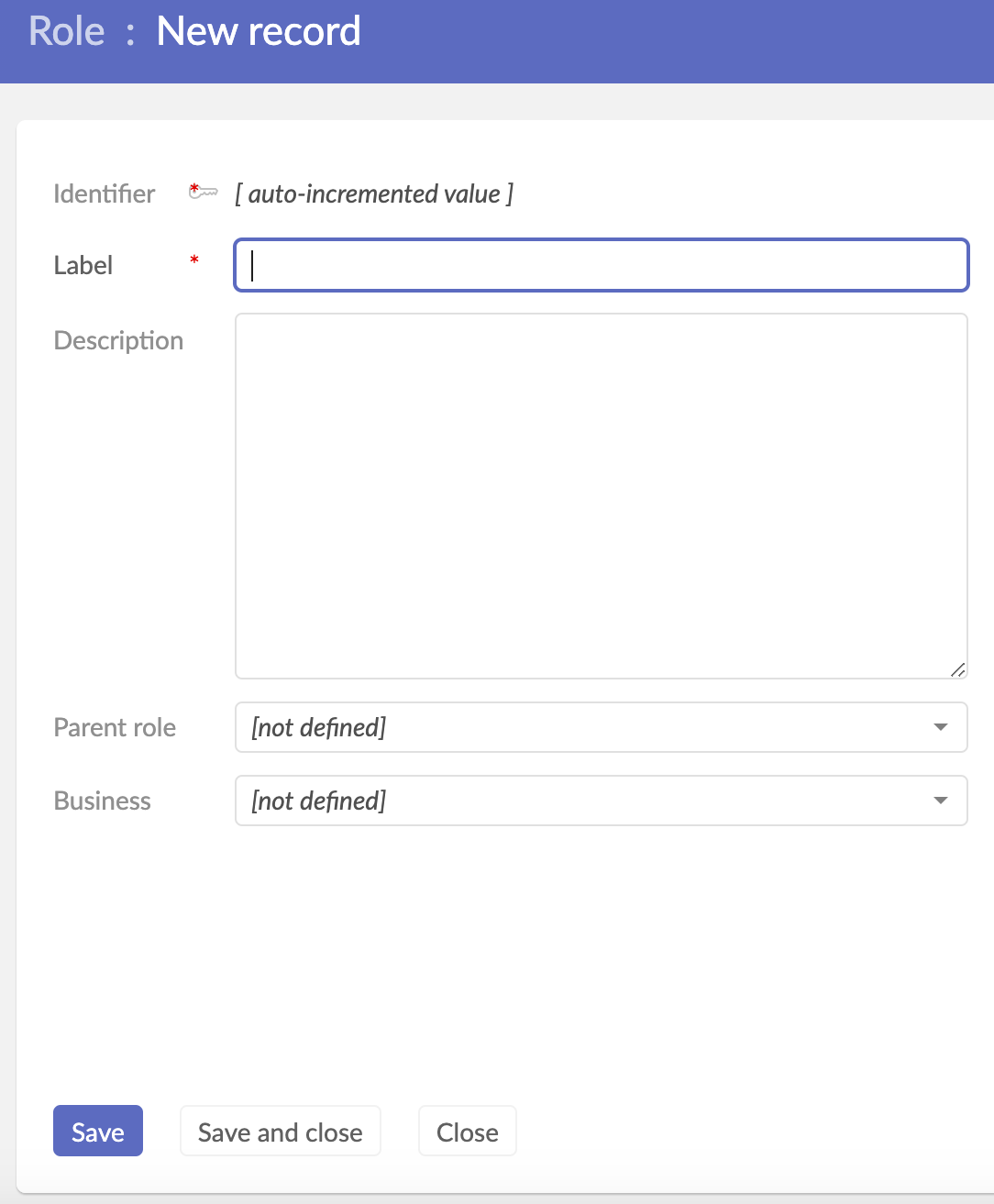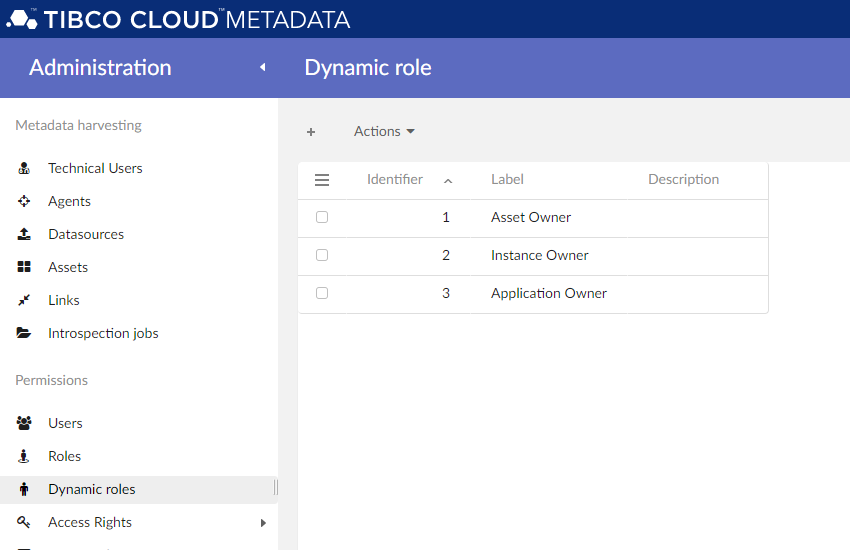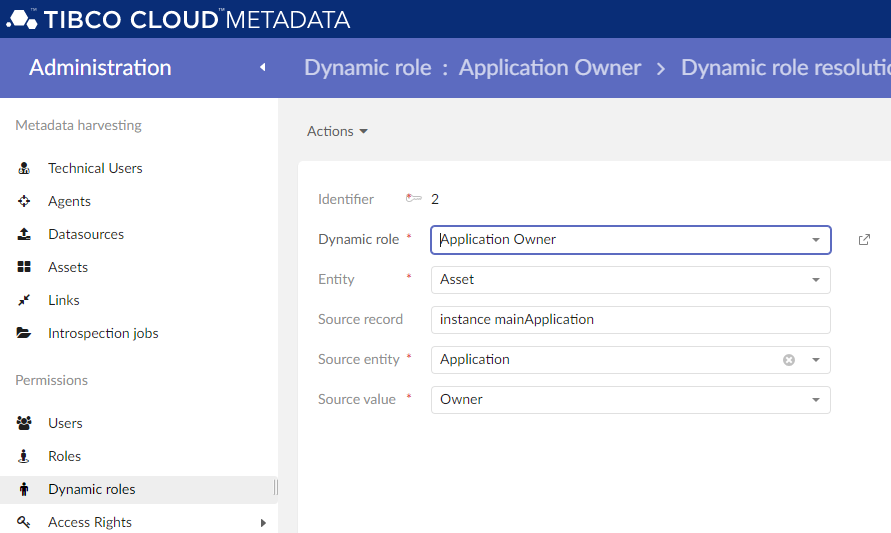User’s roles
Each actor can be defined as a collection of user roles. These roles are either static or dynamic. In this chapter, you will find the specifics regarding these two categories.
Static roles
In the Governance menu of the main control panel, select ‘Role’ to access the creation screen.
The main page listing all existing roles will be displayed.
Click on the + button in the top left corner to access the New record screen.

Main tab
| Field | Description |
|---|---|
| Identifier | This field is mandatory. The identifier is automatically generated. This cannot be modified. |
| Label | This field is mandatory. Set a label for the role you are creating. |
| Description | Free text box to describe your role. |
| Parent role | If the role you are creating is the child of another role, indicate this relationship here. |
| Business | Select an existing Business from the list or click on the + sign to add a new business linked to the role you are creating. You can select one of the existing businesses or create one on the fly. |
Included roles tab
This tab displays all the included roles related to the current role.
| Note: Included roles cannot be modified while in creation mode. |
Dynamic roles
A role is dynamic when it is relative to data. When a static role can be given to a group of persons for all occurrences of a particular entity, a dynamic role can be given to a different group of users for each record. For instance, the owner of a given occurrence of an entity can be set as a field of this occurrence which refers to a group of persons. This group itself refers to a static role. Going through these relations we can then link an occurrence to a static role. The Dynamic role thus consists in describing how to resolve static roles for a given occurrence based on its values.
The configuration of dynamic roles is made from the Administration perspective.

For each dynamic role, a resolution path can be defined from entities. In the example below, the application owner can be resolved for a given Asset by getting its containing Instance and the main Application of this Instance. Now that the source record has been retrieved following the specified path, we can get the source value (Owner here) and which must be a reference to a Group. This group being linked to a static role, the dynamic role can be resolved by this static role.
The value that must fill the field “Source record” can be an empty string if the source value is directly in the current occurrence of the chosen entity. Otherwise, it should be a succession of paths to foreign keys or associations within the records we consult.

Main tab
| Field | Description |
|---|---|
| Identifier | This field is mandatory. The identifier is automatically generated. This cannot be modified. |
| Dynamic role | This field is mandatory. Define which dynamic role this plan will resolve. |
| Entity | The entity from which we want to resolve the dynamic role. An occurrence of this entity will be the starting point of the resolution. |
| Source record | List of successive paths to references separated by a space. If empty, the source record is the current occurrence of the entity defined in the previous field Entity. |
| Source entity | This field is mandatory. Entity retrieved at the end of the paths described in the field Source record. |
| Source value | This field is mandatory. Field referencing a group referencing itself a static role, the final goal of this resolution. |
